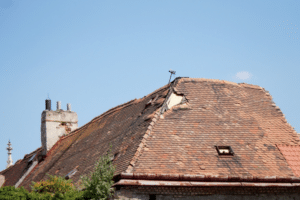How Hot Weather Can Affect Roofs in the UK: What Homeowners Need to Know
When we think of weather damage to roofs in the UK, most people immediately picture heavy rain, windstorms, or even the occasional snowfall. But what about hot weather? Although the UK isn’t exactly famous for scorching summers, periods of heat have become increasingly common in recent years — and they can have a surprising impact on roofs. Whether your property is topped with slate, tile, flat felt, or modern membranes, prolonged heat and strong sun can create issues that every homeowner should know about.
Let’s explore how hot weather affects UK roofs and what you can do to prevent costly damage.
Thermal Expansion and Contraction
One of the main effects of heat on roofing materials is thermal expansion. Simply put, materials expand when they get hot and contract when they cool down. In the UK, where temperature shifts between daytime heat and cooler nights can be significant during the summer, this cycle happens repeatedly.
Over time, this expansion and contraction can:
-
Loosen fixings and fasteners
-
Create small cracks or gaps between tiles or slates
-
Lead to warped roof timbers and battens, especially if the roof structure is older
Even if the temperature rise isn’t extreme by Mediterranean standards, the repetitive stress on the materials adds up. This is why older roofs often show signs of movement or small gaps that can eventually allow water ingress.
Damage to Roofing Materials
Different materials react differently to heat:
-
Asphalt and bitumen-based products can soften under high temperatures. This is a particular concern for older flat roofs, where the felt can blister, bubble, or crack once it cools.
-
Clay and concrete tiles can absorb heat and may become more brittle over time. Sudden cooling, such as from an evening shower after a hot day, can cause micro-cracks.
-
Metal roofs are great at reflecting heat, but they expand considerably in hot weather, which can lead to warping or noise as the sheets shift.
These effects might seem minor at first, but they increase the risk of leaks, tile slippage, and general degradation.
UV Radiation Effects
It’s not just the heat itself — ultraviolet (UV) radiation from the sun also takes a toll. Prolonged exposure can:
-
Break down roofing membranes and sealants, making them brittle
-
Cause fading and surface deterioration on tiles or slates
-
Accelerate ageing in roofline products like fascias and soffits, especially if made from uPVC
For flat roofs, which typically have more exposure to direct sunlight, UV damage can drastically shorten the lifespan of the covering unless it has a protective UV-resistant layer.
Condensation and Ventilation Issues
Hot weather can also highlight existing ventilation problems. A poorly ventilated loft can trap heat, raising the temperature of the roof structure and causing timber to dry out and warp. Over time, this can weaken the roof’s integrity.
Additionally, high heat during the day followed by cooler nights can lead to condensation forming inside the roof space. This might seem counterintuitive, but temperature differentials can create moisture that, if not properly ventilated, encourages mould and rot.
Gutters and Roofline Systems
It’s not just the tiles and coverings that suffer. Gutters, downpipes, and other roofline products can also be affected:
-
Plastic guttering can expand in heat, leading to joints pulling apart or sagging sections.
-
Painted timber fascias may crack or peel more quickly, exposing wood to potential water damage later in the year.
Regular checks can help spot these issues before they cause real problems.
How Homeowners Can Protect Their Roofs
Given the potential for hot weather to damage roofs in the UK, what can homeowners do to protect their properties?
Schedule Regular Inspections
A professional roof inspection, especially before and after the summer months, can identify early signs of heat-related damage. Small repairs now can prevent much bigger problems later.
Improve Ventilation
Proper ventilation in the loft or roof space can reduce heat build-up and help materials last longer. Ridge vents, soffit vents, and breathable membranes all play a part.
Upgrade Materials
Modern roofing products often come with UV-resistant finishes or thermal expansion technology. If you’re planning a re-roof or repair, ask your roofer about heat-tolerant options.
Keep Gutters Clear
Regularly clean gutters to ensure they can expand and contract without blockage, and check for signs of sagging or leaks.
Look After Flat Roofs
Flat roofs are particularly vulnerable to heat and UV damage. If yours is older, consider applying a reflective coating to reduce heat absorption, or upgrading to a more durable membrane.
Final Thoughts
While the UK’s climate may not seem tropical, our increasingly hot summers are already having an impact on roofs across the country. From thermal expansion and UV degradation to ventilation and guttering problems, the effects of heat should not be underestimated.
The good news? With awareness, timely inspections, and a few preventative measures, homeowners can keep their roofs in excellent shape — no matter what the British summer brings.



